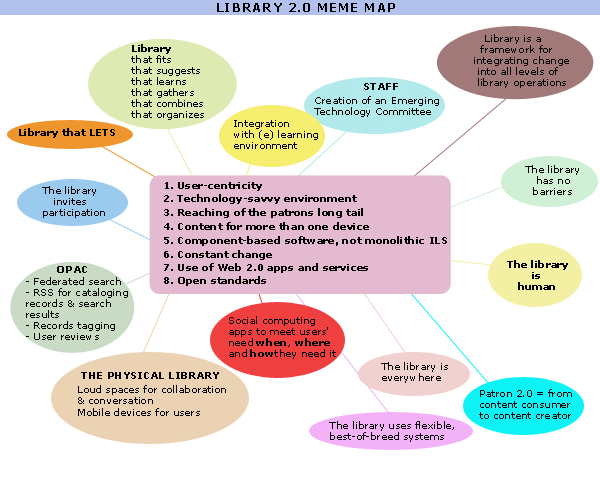Visit ASU's collection of The Library Minute videos
and view five (5) of these one minute videos, then visit two (2) of the
other Web 2.0 tools used as part of the ASU Library Channel suite at http://lib.asu.edu/librarychannel/.
Write
a critical evaluation on ASU Libraries' use of these platforms to
achieve the 4Cs of social media.
Arizona State University (ASU) Libraries have a collection of YouTube clips entitled The Library Minute. I viewed five of these, including The Library Minute: The Social Connection and explored ASU Libraries Facebook page and podcasts. I can appreciate their attempts to achieve the 4Cs of social media – collaboration, conversation, community and content creation, however, I feel they have fallen short.
The Library Channel is ASU Libraries blog sharing content pertaining to news, events and announcements. Trolling through the blog it does not appear there is much collaboration in the presentation of content published. Although it can be inferred a number of people are responsible for content creation as content covers current exhibitions, historical podcasts and YouTube clips on The Library Minute series.
It does not appear the intended audience, ASU LIbraries' users, are participating in the conversation with them. For example, the Facebook page has only 575 likes, rather small scale for a University and the latest post from 11 days ago (7 Dec) about study tips for upcoming exams only had 3 likes and 2 shares. Hardly having a collaborative conversation with the community.
The Library Minute Series on YouTube consists of a number of brief, informative and fairly engaging clips. However, some appeared to have been created a number of years ago, thus not presenting the most current of content creation. The comments I read by viewers also did not appear to be from ASU students, thereby presenting evidence ASU Libraries are not engaging in the conversation with their community. Anali is the only 'character' in The Library Minute series. The inclusion of other ASU students in these clips will assist in collaboration and building community between the library and its users.
ASU Libraries are on Twitter and it appears they are achieving more success in achieving the 4Cs of social media using this social media platform. They have 2474 followers on twitter and have 1768 tweets. This is more of a community than the Facebook group has generated. Tweets are fairly regular, with nine tweets in the last week. It does not appear though users of the library are communicating with the library through Twitter. This conversation is very much one-way communication from the library.
McBurnie (2007) argues a library's use of a social networking tool must be purposeful. In this case I question ASU Libraries' use of social networking tools just for the sake of using another web 2.0 platform and focus on the tools that generate conversation with their community. I feel ASU Libraries should adopt Schrier (2011) principles for integrating social media into their overall strategic plan. In particular principles #1 listening and #2 participation will assist in ASU Libraries in engaging with ASU Library students in social media.
McBurnie, J. (2007, October 1). Your Online Identity: Key to Marketing and Being Found [Web Blog Post]. Retrieved from http://web.freepint.com/go/blog/2510
Schrier, R. A. (2011). Digital librarianship and social media: the digital library as conversation facilities, D-Lib Magazine, 17(7/8) July/August 2011. Retrieved from http://dlib.org/dlib/july11/schrier/07schrier.html
